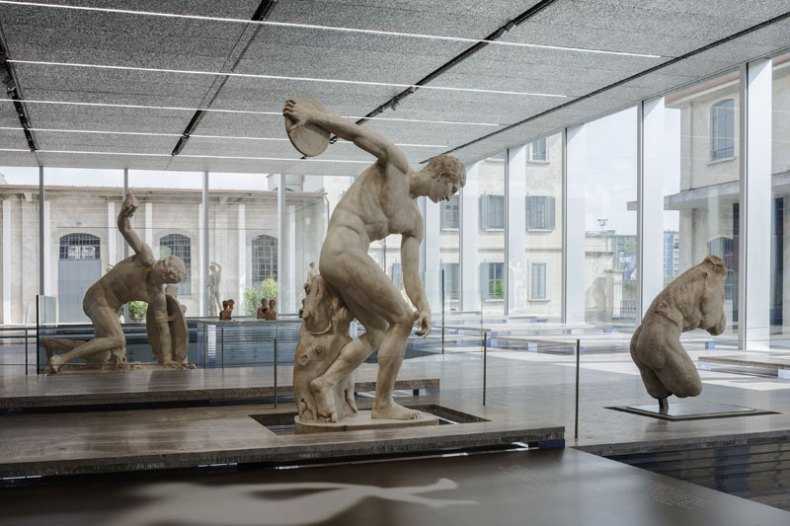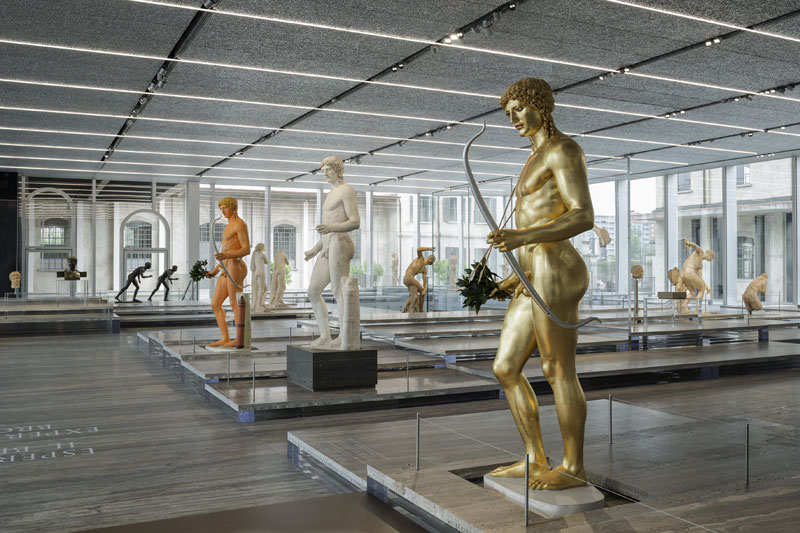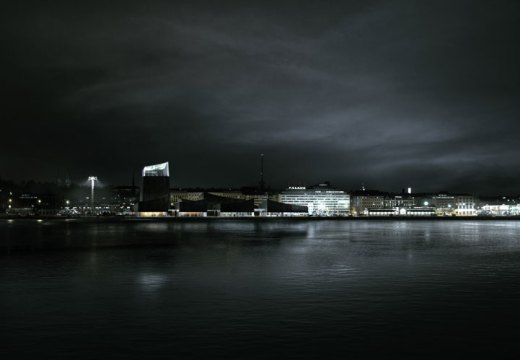The current shows at the Prada Foundations in Milan and Venice, ‘Serial Classic’ and ‘Portable Classic’, challenge our ideas about artistic originality. James Cahill spoke to Artistic Director Germano Celant, and classicist Salvatore Settis, co-curator of ‘Serial Classic’, about the galleries’ unusual classical and contemporary combinations
‘Serial Classic’ is a major exhibition of Greco-Roman statuary in a foundation for modern and contemporary art. What is the relevance or importance of presenting the classical within a ‘contemporary frame’?
Classical Graeco-Roman art is a hidden category of our contemporary culture: the less aware we are of this, the more powerful this influence becomes, if only as a vague reference to (or quotation from) a repertoire of forms – as it all too often happens in contemporary art. ‘Seriality’, the main theme of this exhibition, offers a common ground of thought between classical art and contemporary practices and preoccupations.
Why did you decide to remove or obscure the pedestals beneath the figures? Has classical art (and ‘the classical’ more broadly) suffered from being seen, or visualised, on a plinth?
Rem Koolhaas’s idea of ‘obscuring the pedestals’ is entirely consistent with my own conception of Greek art as originally created within the Classical polis (i.e., community of citizens), by artists who acted as citizens among citizens, expressing common values. Museum pedestals raising ancient statues in a commanding position are actually at odds with the originally ‘democratic’ nature of Greek art.
Do we continue to suffer under a conception of the Greek body as a paradigm of ‘realism’ and/or ‘beauty’?
The point is that there is no beauty without history. Classical art has been revered…exalted as a supreme instance of beauty. But for ancient Greeks there was no (aesthetical) beauty without ethical values. Beauty was mainly conceived as a property of art, the main purpose of which was not merely aesthetic, but narrative. The exhibition aims at conveying the peculiar intensity of classical art.
Given contemporary art’s employment of mechanical reproduction (particularly casting) and its challenging of the idea of ‘originality’, do you find it strange that the relationship between ancient and contemporary production has not been explored more extensively either in exhibitions or scholarship?
Classical culture in general is less and less present in educational systems, therefore it is difficult for many people to even guess how many ideas and practices that we deem absolutely ‘modern’ have deep roots in history. I think it is urgent to raise a wider historical awareness of where we actually come from. There is a difference between passively using models whose origin is unknown, and actively exploring the past.

The Discobolus, Exhibition view of ‘Serial Classic’, co-curated by Salvatore Settis and Anna Anguissola, Fondazione Prada Milano (2015). Photo: Attilio Maranzano. Courtesy Fondazione Prada
I was particularly struck, in your exhibition, by the way that classical art so often resists definitive meaning (and this is only enhanced by its fragmentary or ‘lost’ state). In the case of the Discobolus imaginatively restored as a warrior, should we interpret this restoration simply as a mistake or does misinterpretation have a value?
The main narrative (about classical art itself, both in Greek ‘originals’ and Roman ‘copies’) is intertwined in the exhibition with another narrative, about archaeological (i.e., historically grounded) interpretation. The fact that such an iconic figure as the Discobolus was not identified as such until a more or less complete copy was discovered in 18th century invites reflection.
Read James Cahill’s review of ‘Serial Classic’ (at Fondazione Prada, Milan until 24 August) and ‘Portable Classic’ (at Fondazione Prada, Venice until 13 September) in the July/August issue of Apollo. Buy the current issue here.
Related Articles
Fondazione Prada celebrates thousands of years of ‘unoriginal’ art
The Very Best of the Venice Biennale
Unlimited access from just $16 every 3 months
Subscribe to get unlimited and exclusive access to the top art stories, interviews and exhibition reviews.














![Masterpiece [Re]discovery 2022. Photo: Ben Fisher Photography, courtesy of Masterpiece London](http://www.apollo-magazine.com/wp-content/uploads/2022/07/MPL2022_4263.jpg)
Why are fathers so absent from art history?